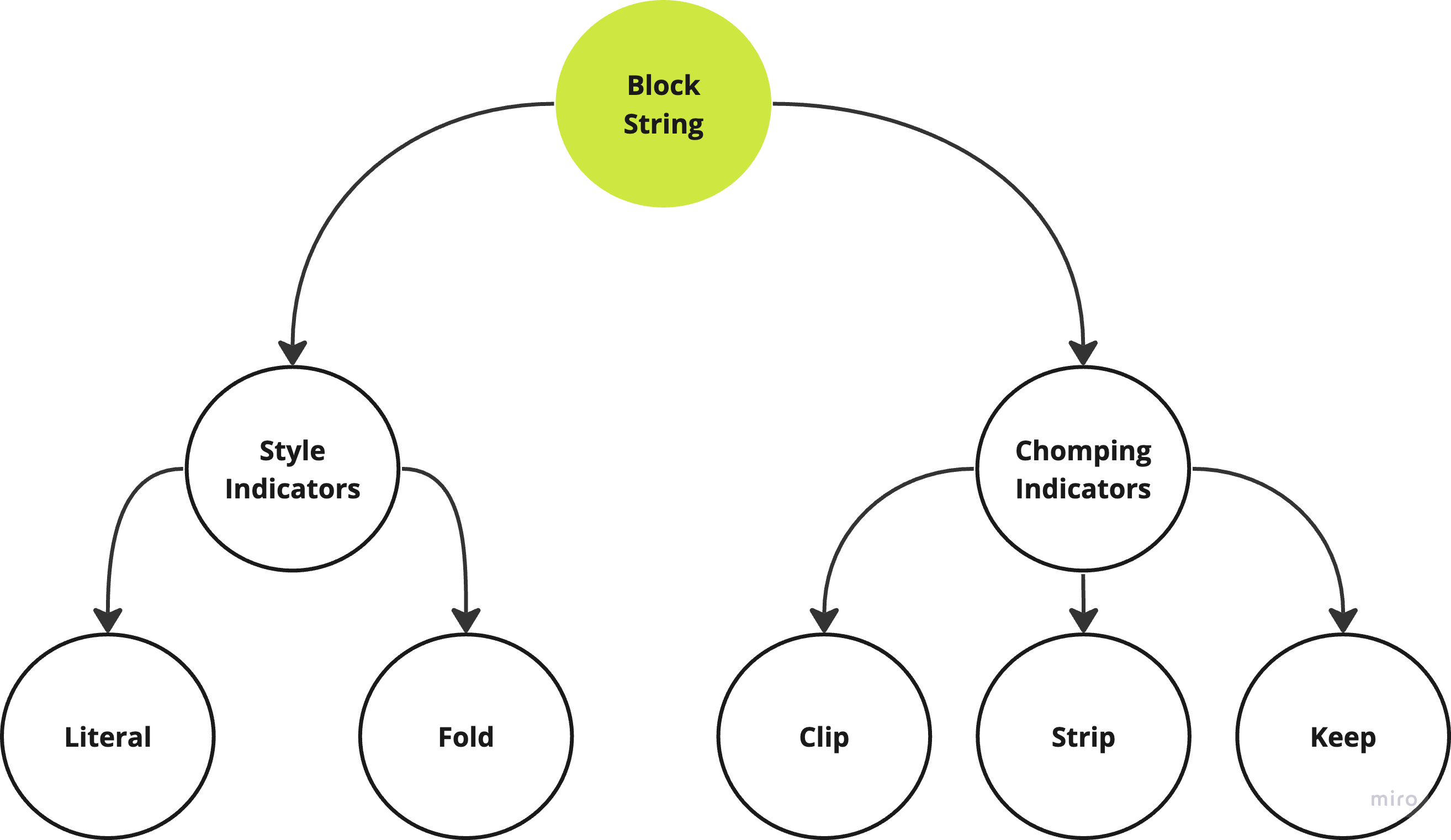Learn how to write multiline strings in yaml using literal and folded styles, with examples and explanations. Compare the differences, advantages and disadvantages of each. Sometimes you want to represent a string in your yaml with multiple lines, but want it to be treated as one long line when it is interpreted. This is called folding. To declare a folded.
Also, find answers to common questions about yaml whitespace, blank. Line1 line2 line3 however, if we have a very long string we want to break into multiple lines but no spaces, we have to escape the newlines instead:. The representer for double quoted scalars for python (both in ruamel. yaml and pyyaml) always does represent newlines as \n. I am not aware of yaml representers in. Learn, how to write a multiline string in yaml. To write a multiline string in yaml, we can use the folded style > where each line break is replaced by a space. There are two types of formats that yaml supports for strings: Block scalar and flow scalar formats. (scalars are what yaml calls basic values like numbers or strings, as. How to correctly have multiline in a yaml text block? I use this in haml view in rails app like = t(mailer. beta_welcome. intro) but no newlines are printed this way, do i need to output it. Learn how to create folded and literal multiline strings in yaml, a way to represent a string that spans multiple lines. See the syntax, best practices, and examples for writing long blocks of. Learn how to use different operators and styles to split yaml strings over multiple lines, such as literal, folded, and block chomping. See examples and code snippets using snakeyaml library.
I use this in haml view in rails app like = t(mailer. beta_welcome. intro) but no newlines are printed this way, do i need to output it. Learn how to create folded and literal multiline strings in yaml, a way to represent a string that spans multiple lines. See the syntax, best practices, and examples for writing long blocks of. Learn how to use different operators and styles to split yaml strings over multiple lines, such as literal, folded, and block chomping. See examples and code snippets using snakeyaml library. Learn how to use multiline strings in yaml to represent complex content without cramming everything onto a single line. Compare literal and folded block scalars, and see when to use. Using the + operator. The second method of creating multiline strings relies on the + concatenation operator in javascript. The idea here is to break a long string into smaller. Learn how to use block scalars and flow scalars for multiline strings in yaml. Compare the differences in style, chomping, indentation, and escaping of each format with examples and. Learn how to use the block style indicator to fold or preserve newlines in yaml multiline strings. See examples of literal and folded styles, and options for newlines at the end. Learn how to break a string in yaml over multiple lines using literal block and folded block styles with indentation examples. Compare the syntax, rules and differences of these two styles with. Use > most of the time: Interior line breaks are stripped out,. In yaml you can specify newlines in a scalar by using quoting and escaping the newlines (\n), or, and that is more natural for your case, by using a literal style block scalar:.
Learn how to use multiline strings in yaml to represent complex content without cramming everything onto a single line. Compare literal and folded block scalars, and see when to use. Using the + operator. The second method of creating multiline strings relies on the + concatenation operator in javascript. The idea here is to break a long string into smaller. Learn how to use block scalars and flow scalars for multiline strings in yaml. Compare the differences in style, chomping, indentation, and escaping of each format with examples and. Learn how to use the block style indicator to fold or preserve newlines in yaml multiline strings. See examples of literal and folded styles, and options for newlines at the end. Learn how to break a string in yaml over multiple lines using literal block and folded block styles with indentation examples. Compare the syntax, rules and differences of these two styles with. Use > most of the time: Interior line breaks are stripped out,. In yaml you can specify newlines in a scalar by using quoting and escaping the newlines (\n), or, and that is more natural for your case, by using a literal style block scalar:.
The CNA's Guide To PointClickCare Mastery: Enhanced Care And Productivity
The Mugshots That Changed The Course Of History: Tvrj's Most Infamous
Nebraska: The GPS That Redefines Road Travel In The Cornhusker State
